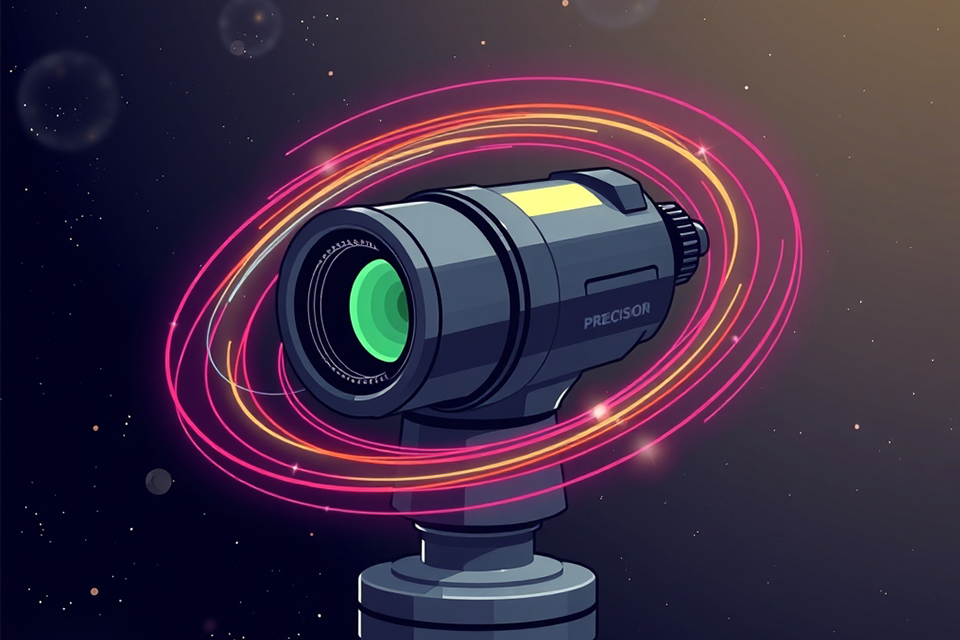Exploring the Fascinating World of Magnetometry
This article will dive into the captivating world of magnetometry, exploring its principles, methods, and uses. You’ll discover how this technology helps us uncover hidden objects, understand geological formations, and even find our way. So, are you ready to embark on this magnetic journey? Let’s get started, as this article is packed with interesting facts and insights that you won’t want to miss!
Table of Contents

What is Magnetometry?
Magnetometry is the method used to measure the strength and sometimes the direction of magnetic fields. Think of it like using a special compass, not just to point north, but also to tell you how strong the magnetic pull is at a specific location. These measurements are typically taken with a device called a magnetometer. These sensitive instruments are used to detect and measure the ambient magnetic field around them. The Earth has its own magnetic field, like a giant magnet, and many objects and materials can either strengthen or weaken this field in their vicinity, creating what we call anomalies. Magnetometry detects these changes or magnetic anomalies, which can tell us a lot about what’s hidden beneath the surface.
Magnetometers are also used in a wide range of applications, from finding buried metal to helping spacecraft navigate. For example, magnetometry is commonly used in geophysical surveys to map geological structures, locate mineral deposits, and even find buried archaeological artifacts. It is also used in magnetic resonance imaging (MRI), which uses magnetic fields and radio waves to create detailed images of the inside of the body. Do you have any guesses about other uses of magnetometry? Have you ever thought about using a magnetometer yourself?
How Does a Magnetometer Work?
Have you ever wondered how a magnetometer detects these invisible fields? It turns out different types of magnetometers work in various ways. However, one common type is the proton precession magnetometer, also known as a proton magnetometer. It takes advantage of a property of protons called “spin.” When protons are placed in a magnetic field, they start to spin like tiny tops. The speed of this spinning is proportional to the magnetic field‘s strength. The proton magnetometer measures this speed to figure out the strength of the magnetic field. This is an example of the magnetometry theory, where principles of atomic physics are applied to measure magnetic fields. And different types of magnetometers like fluxgate or cesium vapor magnetometers use different principles to sense magnetic fields. For instance, cesium vapor magnetometers are incredibly sensitive and measure changes in the absorption of light by cesium atoms caused by the external magnetic field.
Another type of magnetometer is the optically pumped magnetometer, which measures the magnetic field by detecting the change in the absorption of polarized light by atoms, such as cesium or rubidium, in the presence of a magnetic field. The frequency of the absorbed light is proportional to the strength of the magnetic field, allowing for precise measurements. One of the most sensitive types of magnetometers is the SQUID (superconducting quantum interference device) magnetometer. These devices use the properties of superconductors to measure extremely weak magnetic fields, making them ideal for applications in medical imaging and materials science. Think about the impact this precision has on scientific discovery! Isn’t it fascinating how we can use these principles to measure something we can’t even see? Let me know what you think about these amazing tools!
What is a Magnetometer Survey?
A magnetometer survey is like a treasure hunt, but instead of looking for gold, we’re looking for magnetic anomalies! During a magnetic survey, a magnetometer is systematically moved across a survey area, taking measurements at regular intervals. The data collected, called survey data, shows variations in the magnetic field. These variations, or anomalies, can indicate the presence of buried objects or geological features. These surveys can be done on land, in the air (airborne), or even underwater.
The spacing of the measurements, or line spacing, is important. Closer spacing gives more detailed data but takes more time. So, how do we choose the best line spacing? Well, it depends on what we’re looking for and how deep it might be! For example, if we’re looking for a large object that’s not too deep, we might use wider line spacing. But if we’re looking for something small or buried several meters deep, we’ll need closer spacing. The type of magnetometer used also matters. Some magnetometers allow for faster surveying, while others are more sensitive but slower. Factors such as the size of the survey area, the expected depth of the target, and the desired resolution of the data are used to determine the optimal survey parameters. Imagine planning your own survey. What factors would you consider?
What Are the Different Types of Magnetometers?
There are many different types of magnetometers, each with its own strengths and weaknesses. We already talked about proton precession magnetometers, which are robust and relatively inexpensive, but they can’t take measurements continuously. Fluxgate magnetometers can measure the direction of the magnetic field, not just the strength, making them useful for navigation. Cesium vapor magnetometers are incredibly sensitive and are used in land, sea, and airborne surveys. It’s like choosing the right tool for a job. You wouldn’t use a hammer to screw in a screw, right?
Magnetometers with their sensors separated by a fixed distance, known as gradiometers, are used to measure the gradient of the magnetic field, which can help to cancel out the effects of the ambient magnetic field and improve the detection of small, localized anomalies. Other magnetometers are also available, each with its unique properties and applications. For example, atomic magnetometers are extremely sensitive and can be used to measure very weak magnetic fields, while SQUID (Superconducting Quantum Interference Device) magnetometers are used in research to measure extremely tiny magnetic fields. What other types of magnetometers can you think of, and what might they be used for?
Here is a table summarizing some common types of magnetometers:
| Magnetometer Type | Principle | Sensitivity | Applications |
| Proton Precession | Measures proton precession frequency | Moderate | Geophysical surveys, archaeology, UXO detection |
| Fluxgate | Measures changes in magnetic flux | Moderate | Navigation, geophysical surveys, space exploration |
| Cesium Vapor | Measures light absorption by cesium vapor | High | Geophysical surveys, mineral exploration, oil and gas exploration |
| Optically Pumped | Measures light absorption by alkali metal vapor | Very High | Geophysical surveys, archaeology, medical imaging |
| SQUID (Superconducting Quantum) | Uses superconducting loops | Extremely High | Fundamental research, biomagnetism, materials science, medical field measurements, geophysical techniques |
How is Magnetometry Used in Geophysics?
In geophysics, magnetometry is a powerful tool. As you now know, magnetometry measures perturbations in the Earth’s magnetic field caused by variations in the magnetic properties of rocks and minerals. This makes magnetometry one of the most widely used geophysical techniques. Geophysical surveys use magnetometers to map subsurface geological structures, find mineral deposits, and even locate buried pipes or cables. Different rocks have different magnetic susceptibility, meaning they respond differently to a magnetic field. For instance, igneous rocks, which are formed from cooled magma or lava, often have high magnetic susceptibility due to the presence of minerals like magnetite. Sedimentary rocks, on the other hand, usually have lower magnetic susceptibility. These differences create variations in the magnetic field that a magnetometer can detect.
These magnetic anomalies can reveal a lot about what lies beneath the surface. For example, a large positive anomaly might indicate a large body of igneous rock, while a series of smaller anomalies could suggest a fault zone. Geophysical surveys using magnetometers can also help locate buried ferrous metal objects, like pipelines or storage tanks. The data from these surveys is used to create detailed maps of the subsurface, which can be used for everything from planning construction projects to exploring for natural resources. It is also used to study the Earth’s magnetic field, including its variations over time and its interactions with the solar wind. Pretty neat, huh? Can you think of any specific examples where this might be useful? You can search for related information on our website Customized Neodymium Magnets.
How is Magnetometry Used in Archaeology?
In archaeology, magnetometry is like having X-ray vision! Archaeological sites often contain features like buried walls, hearths, and pottery, which can have different magnetic properties than the surrounding soil. For example, when clay is fired to make pottery or build a hearth, its magnetic properties change, making it detectable by a magnetometer. Even a simple pit dug into the ground and refilled can create a magnetic anomaly because the disturbed soil has a different magnetic signature than undisturbed soil. This allows archaeologists to “see” what’s beneath the surface without even digging!
Magnetometer surveys can help archaeologists decide where to excavate, saving time and resources. They can also reveal features that might be difficult or impossible to see with the naked eye. For instance, a magnetometer might detect the remains of a wooden structure that has long since decayed, leaving only a subtle magnetic trace. By mapping these magnetic anomalies, archaeologists can create a picture of the site’s layout and learn about the people who lived there in the past. Magnetometers can also be used to locate and study shipwrecks, as the iron in the ship’s hull and the artifacts on board create a strong magnetic anomaly. How cool is that? What do you think archaeologists might discover next using magnetometry?
What Are the Limitations of Magnetometry?
While magnetometry is a powerful technique, it does have limitations. For one, magnetometers are subject to interference from various sources. For example, power lines, fences, and even passing cars can create magnetic noise that can mask the signal from the target. Also, the Earth’s magnetic field is not uniform and changes over time, which can complicate data interpretation. This is why it’s essential to use a base station to monitor these changes during a survey. A base station is a stationary magnetometer that records the ambient magnetic field at a fixed location during a survey.
Another limitation is that magnetometry can’t tell you everything. It can detect the presence of an object, but it can’t always tell you what that object is. A magnetic anomaly could be caused by a buried pipe, a geological feature, or even just a pile of ferrous scrap metal. That’s why magnetometry is often used in conjunction with other geophysical techniques, like ground-penetrating radar or electrical resistivity, to get a more complete picture. Each method provides different information, and when combined, they can give a much more detailed understanding of the subsurface. Moreover, the depth at which objects can be detected using magnetometry depends on several factors, including the size and magnetic properties of the object, the sensitivity of the magnetometer, and the presence of magnetic noise. Generally, larger objects with strong magnetic signatures can be detected at greater depths, while smaller objects or objects with weak magnetic signatures may only be detectable at shallower depths. Are there any other limitations you can think of?
How to Interpret Magnetometry Data?
Interpreting magnetometry data is both an art and a science, involving careful analysis and an understanding of the principles of magnetism. It requires a good understanding of geology, magnetism, and the specific type of magnetometer used. The first step is usually to correct the data for various factors, such as instrument drift and variations in the Earth’s magnetic field. Then, the data is typically displayed as a map, with different colors representing different magnetic field strengths. A skilled interpreter can identify patterns and anomalies in these maps that might indicate buried objects or geological features. For example, a circular anomaly might suggest a buried storage tank, while a linear anomaly could indicate a pipeline or a fault.
However, interpretation is not always straightforward. Multiple objects or features can create complex magnetic signatures that are difficult to separate. That’s why it’s important to consider other sources of information, such as geological maps, historical records, and data from other geophysical surveys. In some cases, it may even be necessary to dig a few test pits to confirm the interpretation. But even with these challenges, magnetometry remains a valuable tool for exploring the hidden world beneath our feet. If you are interested in magnet grade, you can learn more on our website Magnet Grade. The grade of a magnet, such as N35, N42, N52, N35H, etc., indicates the strength of the magnetic material. What techniques do you think could be used to improve data interpretation? In addition, for different applications, such as wind power, we also need to select different magnetic materials.
Summary of Key Points on Magnetometry
Magnetometry is the science of measuring magnetic fields, and it’s like having a superpower to “see” the invisible.
Magnetometers are the tools used to measure these fields, and they come in various types, each with its strengths.
Magnetometry is used in geophysics to understand the Earth’s structure and find resources.
In archaeology, magnetometry helps uncover buried artifacts and structures without extensive digging.
Interpreting magnetometry data requires skill and knowledge, but it can reveal fascinating insights.
While magnetometry has limitations, such as interference and ambiguity, it remains a powerful exploratory technique.
The choice of magnetometer and survey method depends on the specific application and the target being sought.
I hope this journey into the world of magnetometry has sparked your curiosity! What do you think are the most exciting applications of this technology?
Welcome to our factory’s custom NdFeB magnet services, where your ideas and needs become reality.
Simply share your concepts, requirements, or design drawings, and we’ll work closely with you to produce high-quality NdFeB magnets tailored to your exact specifications and performance standards.
You’ll benefit from competitive pricing, complimentary samples, and professional technical support from our dedicated team, making the customization process worry-free, safe, and cost-effective.
Our goal is to ensure that your products achieve outstanding performance with the highest level of quality and precision.
Economic Development Zone, Industrial Park, Shehong City, Sichuan Province, China.
Contact
News
US Department of Defense Allocates $5.1 Million to Recover Rare Earths from E-Waste
On January 17, 2025, the US Department of Defense announced a $5.1 million allocation to Rare Resource Recycling Inc. under the Defense Production Act.
China Revises and Implements the “Regulations for Outward Direct Investment Statistics,” Including Rare Earth Oxides
It is reported that on January 1, 2025, the Ministry of Commerce, the National Bureau of Statistics, and the State Administration of Foreign Exchange officially implemented the revised “Regulations for Outward Direct Investment Statistics.”
Canada Rare Earth Acquires Majority Stake in Laos Rare Earth Refinery
According to Magnet Materials News, on January 9, 2025, Canada Rare Earth Corp. announced plans to acquire a 70% stake in a rare earth refinery in Laos. This acquisition aims to enhance supply security and economic benefits.



